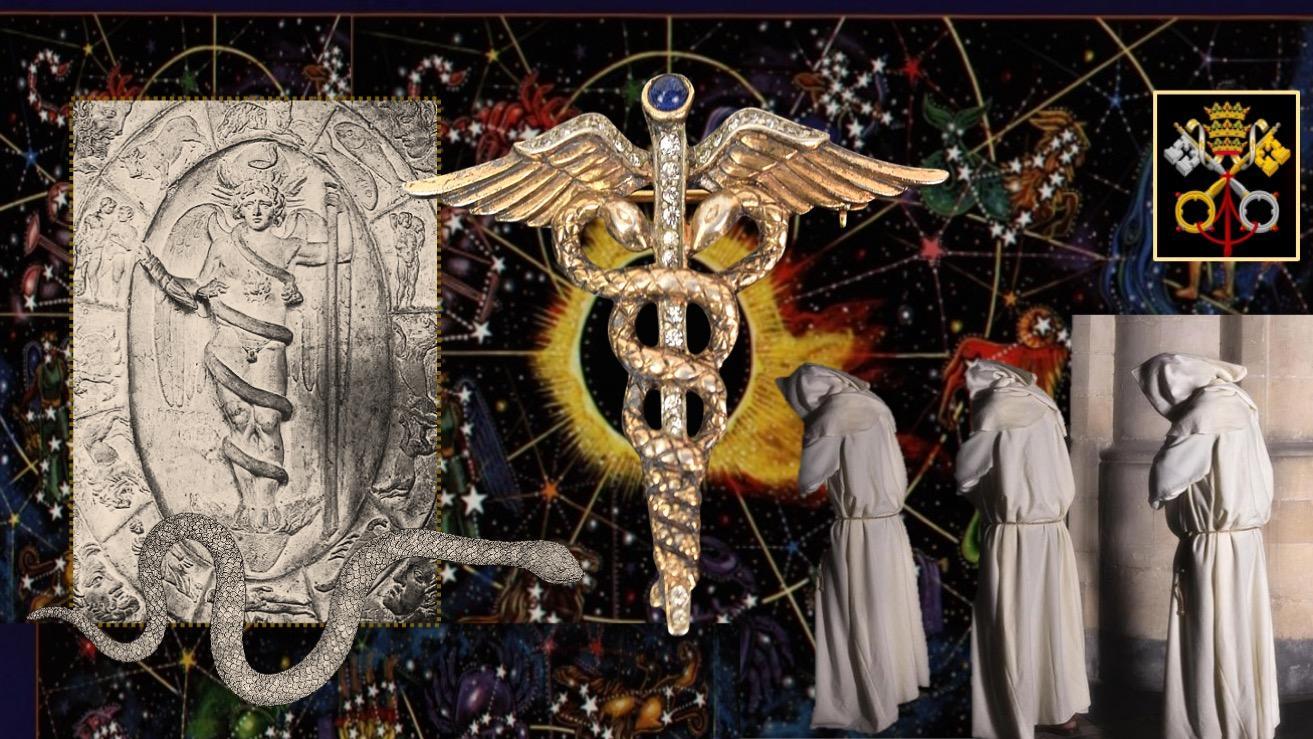
What was the prior religion of Rome before Christianity? Yes, it was Mithraism, a 7-step spiritual practice to attain enlightenment, and soul ascension to God. Mithraism was the approved state religion of Rome for 300+ years, until it was totally suppressed in the 4th century. That’s when Emperor Constantine “merged” all “Pagan” faiths into one state religion, “Christianity”. I wonder why? To answer that question I encountered a fascinating history of Roman manipulation for power, and it is most likely true.
Executive Summary:
- Mithra was a Sun God from the East worshipped widely in 4th century Rome just before the Christian era. A secret brotherhood society of Roman government and military, it emphasized discipline, empowerment and ascension.
- Seven steps of the secret Mithraic initiation, something like the Freemasons, led to a man’s refinement to the level of a divine being. Underground cave temples housed the rituals, but very little is known of the actual practices.
- Astrological symbolism of Mithraism represents human evolution through the Ages of Astrology. It indicates knowledge of the Precession of the Equinoxes, the 26,000 Great Year cycle of Ages. Mithraism uses symbolism of Taurus the bull, planets, stars, zodiac, serpent, Sun, Moon, and the kundalini caduceus intertwined snakes of Hermes and Thoth.
- Emperor Constantine ended centuries of persecution of Christians and solved his political problems by embracing Christianity. He silenced the awakening of Mithra followers and closed all non-Christian temples.
- Rome outlawed Mithraism and all “Pagan” worship, merging and uniting them into Christianity. Constantine created a new dynasty, and made himself the head. He directed research about Jesus Christ, translations from Hebrew to create a Bible, interpretations of scriptures, and built Christian churches on top of old Mithraic temples. Secret Mithra brotherhood ended, and Roman secret societies were born.
- 300 years later, 6th Century Roman Catholic Monk Dionysius created a new calendar to count years from 1 CE. This was done in order to cancel the upcoming “Rapture” and to postpone the predicted end of the world by 2100 years. Oh dear! That would be right NOW! What does this mean?
- Conclusion: The Roman Empire never fell. It transformed itself into the Roman Catholic Church and the Vatican. Rome became fabulously wealthy, guiding our lives, our money, and our reality for two thousand years. What now?
- Moral: Just one more confirmation that we’re in the Shift of the Ages. Mitha taught the only truth, the secret to life: It’s time to buckle up, take responsibility, claim our own divinity, and know God within ourselves without depending on outside authority to do it for us. Yep.
Introduction:
One of our most powerful shared cultural roots is the Roman Empire. Perhaps if we can see how Rome molded existing traditions and rituals to solidify its dominion over politics, money, and the world mind, we can better heal today’s chaotic puzzle. We keep the positive, and discard un-serving elements that no longer work.
WHY have I been asked to write this article? I’m getting that it is relevant to the inevitable awakening of humanity happening now. The Ages of Mankind are related to the Great Year, Precession Cycle of 26,000 years, which mirrors the rise and fall of consciousness and civilization, following our Sun’s orbit through the Milky Way. Look it up. There are 12 ages each lasting roughly 2,100 years. Right now, we are 2,100 years after the birth of Christ. This was the age of Roman rule, the Age of Pisces. Now this is ending and we’re moving into the Age of Aquarius. Think about it.
I’m supposed to find the roots of our deepest unconscious beliefs. Not to denigrate Christianity, but to show how it might have been inspired by the feats of Rome, and secret societies across the vast Empire. And to show how generation after generation, rulers used illusion, power, and money to skillfully block spiritual ascension, and create an impenetrable barrier between humans and God. Sadly, they worked so hard to block our ascension at every turn, they forgot the secrets themselves. Maybe that’s why Western culture now is at a serious identity precipice now, due to short-sighted negligence, selfish power grabbing.
I have been asked to suggest that while the Bible is true holy scripture, it was selected and edited in such a way that it must be read allegorically, carefully, not literally. Hopefully soon we’ll be able to read the original unedited texts, to learn a great deal more.
The current awakening of mankind is assured. Pre-ordained. How to reach our divine nature was hiding in plain sight, in the symbolism of the serpent, the stars, the pole, and the Kundalini. Mithraism and many other ancient practices knew these spiritual secrets.
Now is our time to “clear the slate” of negative energies to prepare for the coming Silver and Golden Ages. We are at the uncomfortable point of questioning our deep core beliefs. But how can we even see them? It difficult, because they are part of our core. We have to look in the mirror, dissolve ourselves into it, forgive them, and forgive ourselves.
Great progress has been made in the Age of Pisces, but also great tragedies, domination, and cruelty. As the pendulum swings strongly in a new direction, our collective reality no longer accepts subjugation and half-truths, demanding justice for all on the planet Earth. We are ready for a few surprises – in fact, now we demand the complete truth no matter how horrible. So, we hunker down. We hunt down the criminals. We arrest them and respectfully offer them a last chance to join the 99%, or to choose their mode of departure – suicide, firing squad, or injection. That’s why I’ve been told to write this article. You might need a cup of tea.
1. History of Mithraism
For many centuries Romans worshipped ‘Numina’, the divine beings. Everything in Nature was imbued with the sacred force of the Numina, who manifested Divine Will through natural phenomena. The 12 gods and goddesses most honored in Rome were: Apollo, Jupiter, Juno, Minerva, Vesta, Ceres, Diana, Venus, Mars, Mercury, Neptune and Volcanus.
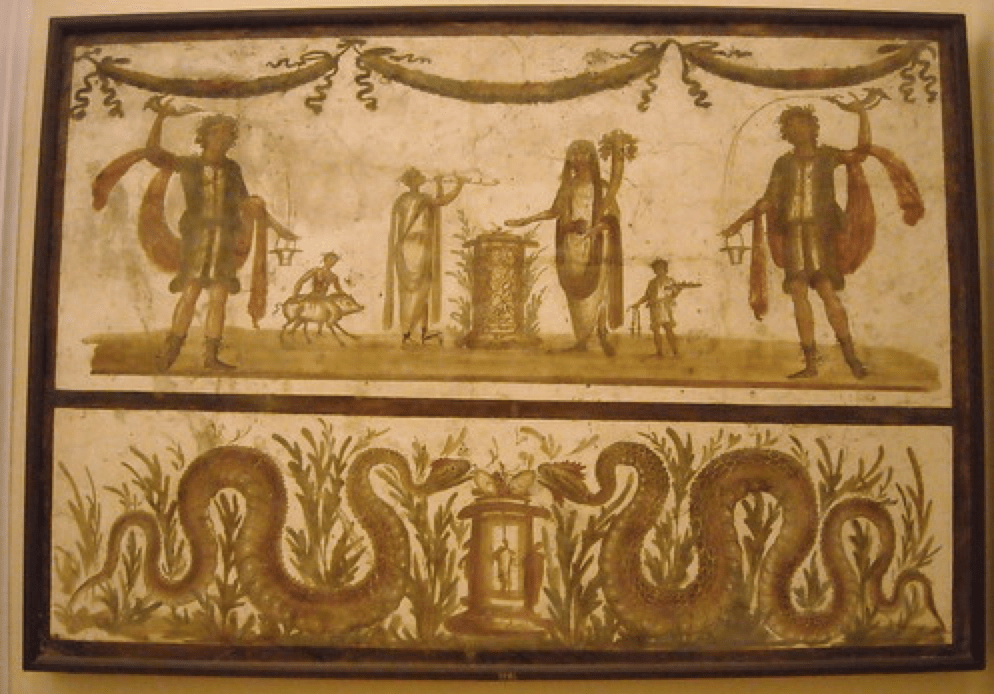
Numina divine presence infused all things, uniting the underworld with the earthly realm.
In Palestine, the prophet Yeshua taught spiritual ascension, and Roman governors felt threatened. Although they crucified him like a criminal, Yeshua and his followers understood the spiritual meaning of his death, and their conscious practices continued to grow. After Yeshua’s death, Christians were persecuted throughout the empire, and even called atheists because they believed in an “invisible” God.
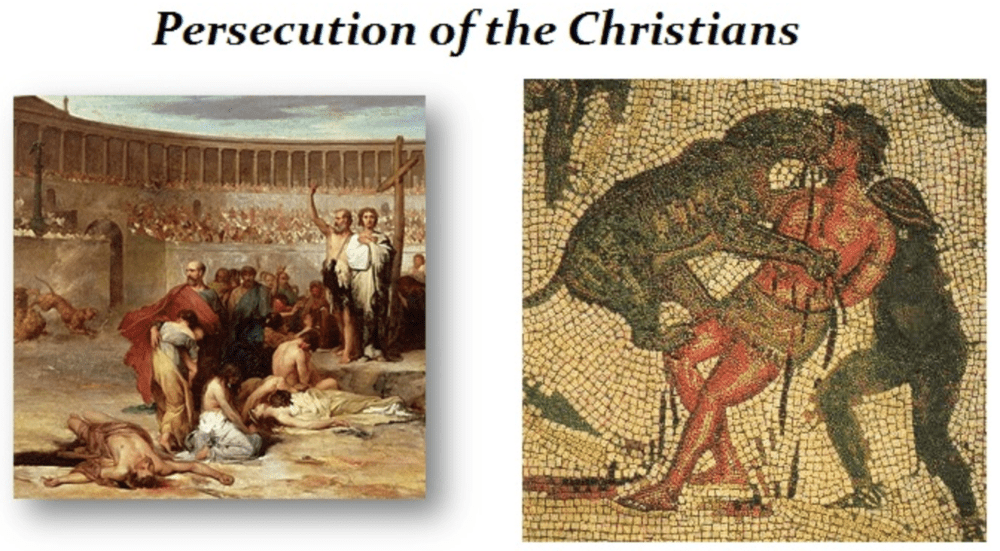
Mithraism was a mysterious cult and Christianity’s last great competitor before the official conversion of the Roman Empire to Catholicism. A powerful unifying force in the Roman brotherhood promoting spiritual ascension, Mithraism was infused with astrological symbolism. This secret society of underground temples was based on self-respect, empowerment, renunciation of desire, and spiritual ascension. Mithraism soon became the official state religion of the Roman Empire and endured as such for over three hundred years. Followers of Mithra learned to read, trained the body and mind, practiced martial art, breathing exercises, and discipline of the senses. Through these practices any man could advance through seven levels of initiation to become a divine being. Mithraism was popular among Roman soldiers, as it unified the Empire under a single god. It also accepted other deities, effectively paving the way for monotheistic Christianity as state religion.
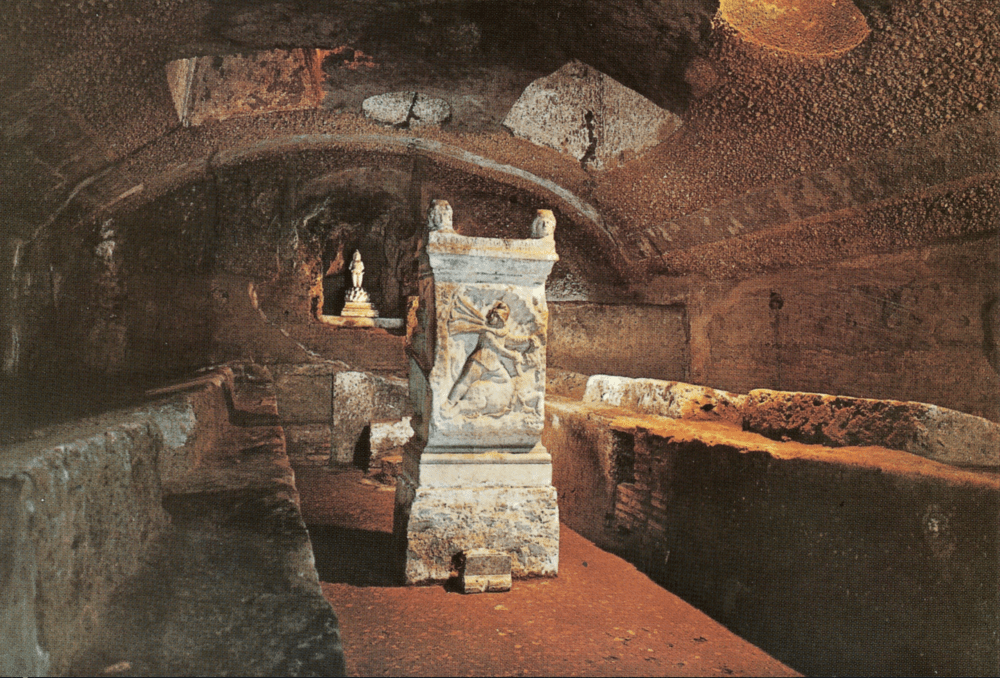
I’m getting that Mithra temple worship came from Northern Persia, interpreted from the teachings of the Blue Gods of Kashmir. These were the famous Pleiadian multi-dimensionals who taught the Hindu lineage of spiritual practices, were behind the Puranas and Sanskrit, the root of many world languages.
Mithra, the Sun god, was said to be born on December 25th when he emerged fully grown from a rock. His worship was first seen around 3,000 BCE, spreading far east through India, Japan and China, and west through all of Europe and the British Isles. One of the biggest Mithraic temples is located under the Church of St. Clemente in Rome.
Mithra’s followers called him the “Light of the World”, symbol of truth, justice, and loyalty, negotiator between heaven and earth, and member of a Holy Trinity. The practice emphasized self-control, renunciation of sensual desire, and Mithra was said to be celibate through his life. The brotherhood became a system of ethics that unified many diverse communities against forces of evil and chaos.
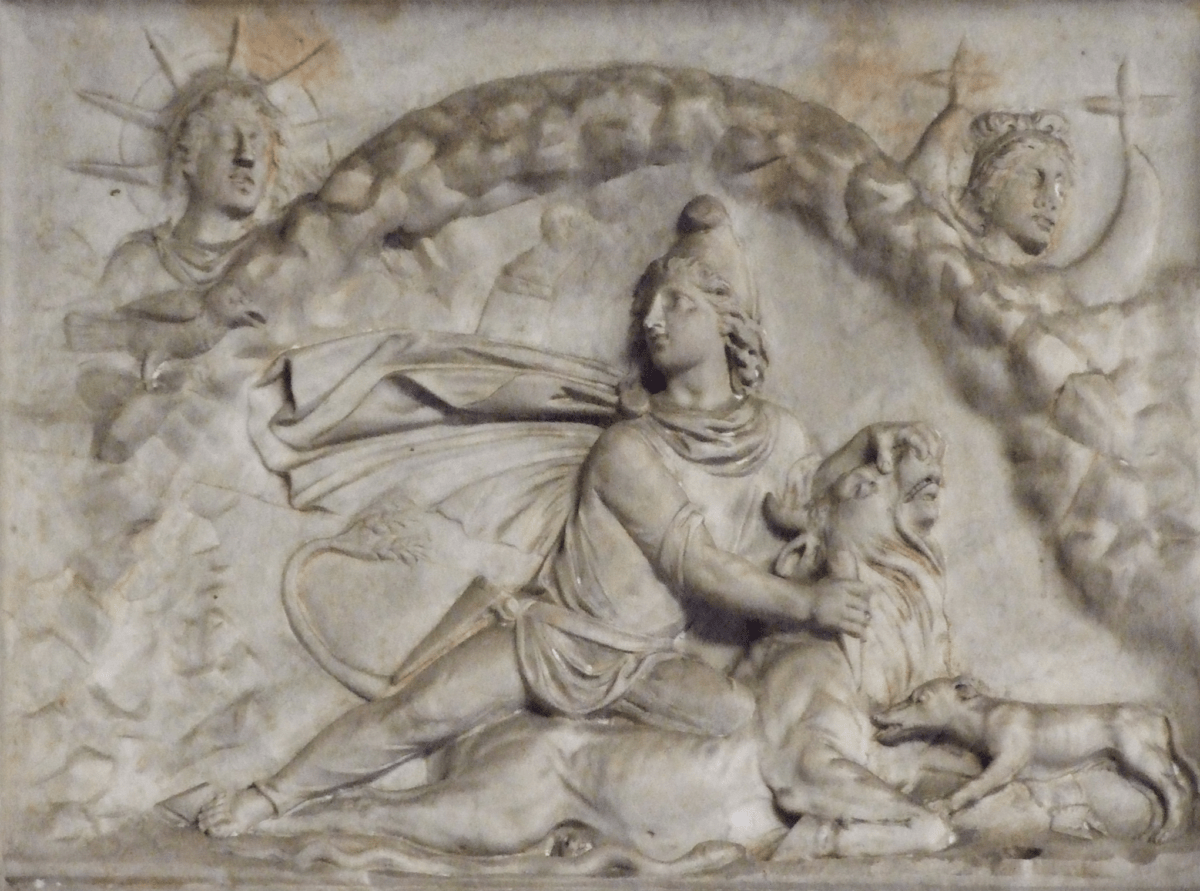
Mithra kills Taurus the Bull in order to birth the new Zodiac Age for Earth. He rules time and the path of the Sun and Moon across the sky, under the gaze of Apollo (Sun) and Diana (Moon). Mithraists believed a benevolent Supreme God will sympathize with our sacrifices to grant immortality and eternal salvation in the next world. They foresaw a final day of judgment in which the dead would rise again. They predicted a final conflict that would destroy the chaos in the world to bring triumph of light over darkness. Is it happening now?
2. Seven Steps in the Secret Mithraic Initiation
Joining this mystery secret society was a big deal. Upon enlistment, the first act of a Roman soldier was to pledge absolute obedience and devotion to the emperor. Loyalty to authority and to fellow soldiers was a cardinal virtue, so the Mithraic religion became a powerful tool for obedience. Mithra worshippers equated their religious practices to their military service. Initiates considered themselves sons of the same father sharing brotherly love. Like Freemasonry and other secret societies, Mithra social structure was a staged series of initiations or degrees in which men were taught by allegory and symbol in the profound mysteries of nature, to attain self-discovery and ascension.
Mithra was a chaste god, and his worshippers were taught respect for celibacy and a spirit of camaraderie. Their morality encouraged selfless action rather than total renunciation, hence they found stimulation, comfort, and support in its guidelines. Roman soldiers valued mastery over evil temptation just as much as military victory.
Purification through a ritualistic baptism was required of the faithful, after which they drank wine and ate bread to symbolize the body and blood of God. Sundays were held sacred. When Mithra’s earthly mission was complete, he held a Last Supper with his companions before ascending to heaven, to forever protect the faithful from above.

Mithraists held similar ideals to Persian Zoroastrian beliefs, in which life was seen as a struggle against evil forces. This concept of life gave it new meaning to life after death. The struggle between good and evil continued into the afterworld, where Mithras ensured his followers protection from the dark, rewarding their loyalty with eternal life.
Mithraism was the archetypal mystery cult secret society. Secret ceremonies admitted candidates with chants and symbolism that were known only to the initiated. In this way, the mystery cult effectively controlled their followers. Before his initiation a newcomer had to prove his courage and devotion by swimming across a rough river, descending a sharp cliff, or jumping through a fire with his hands bound and eyes blindfolded. The initiate was also given the secret Mithraic password, which he was to use to identify himself to other members, and to repeat to himself frequently as a personal mantra. Sounds like Greek fraternities.
Mithra’s followers believed the human soul descended into the world at birth. The goal of life’s journey was to attain the soul’s ascension through seven heavenly gates, corresponding to seven levels of initiation. So, promotion to a higher rank in the religion would correspond to a heavenly soul journey. Promotion was obtained through submission to religious authority (prostration), casting off the old life (nakedness), and liberation from bondage through the mysteries (chanting).
Mithraic initiation included symbolic climbing of a ceremonial ladder with seven rungs, each of a different metal to symbolize seven known celestial bodies. By symbolically ascending this ceremonial ladder through successive initiations, the neophyte could proceed through the seven levels of heaven.
The Seven Grades of Mithraic Initiation:
- Corax (Raven)
- Nymphus (Male Bride)
- Miles (Soldier)
- Leo (Lion)
- Peres (Persian)
- Heliodromus (Sun-Runner)
- Pater (Father)
Each grade was ruled and protected by a planetary God (Mercury, Venus, Mars, Jupiter, the Moon, the Sun, and Saturn.) Each successive degree of initiation symbolized the death of the old person, from which he would be reborn as a new man. This represented the end of his life as an unbeliever and cancelled previous allegiances to all other unacceptable beliefs. The title Corax (Raven) originated with the Zoroastrian custom of sky-burial of the dead on funeral towers to be eaten by carrion birds, a custom continued today in parts of India by descendants of Zarathustrans.
Other initiation ceremonies included clashing cymbals, beating drums, and unveiling a statue of Mithras. The initiate drank wine from the cymbal to recognize it as the source of ritual ecstasy and ate a small piece of bread placed on a drum, to signify his acceptance of Mithras as the source of nourishment. This bread had been exposed to the rays of the sun, so by eating the bread the worshipper was partaking of the divine essence of the sun itself. The initiate would also offer a loaf of bread and cup of water to the statue of Mithras. Initiates had their foreheads marked with a brand or a tattoo of an “X” to indicate they had passed to a high level, clearly visible on portraits of Emperors.
Mithraism was unique in that it was a cult for men only. Women had to seek salvation through another God, although the frequent juxtaposition of Mithraeums to the temples of Cybele, the Magna Mater, Great Mother Goddess indicates that wives and daughters of the Mithraists may have worshiped there. By excluding women Mithraism sadly lost the passionate devotion of great women who throughout history have uplifted the fortunes of religion. And perhaps this is part of the reason Constantine chose to erase Mithraism from Roman life.

Worshippers used underground caves and grottos as temples, with steps leading down to the entrance. They took part in masquerading as animals, such as ravens and lions, and used ritual chants in unknown tongues.
During the rituals, followers learned about the evolution of the universe and the destiny of mankind. The services included learning Mithraic symbolism, praying while kneeling on benches, and chanting hymns to flute. Chants were sung about Mithras’ horse-drawn sun-chariot crossing he sky.
Invokers and worshippers of Mithras prayed: “Abide with me in my soul. Leave me not [so] that I may be initiated and that the Holy Spirit may breathe within me.” Animal sacrifices, mostly of birds, were also done in the Mithraeums. The Mithraic priest’s duty was to maintain the eternal holy fire on the altar, invoke the planet of the day, offer the sacrifices for the disciples, and preside at initiations. The Mithraic priests were called “Patres Sacrorum”, or Sacred Fathers.
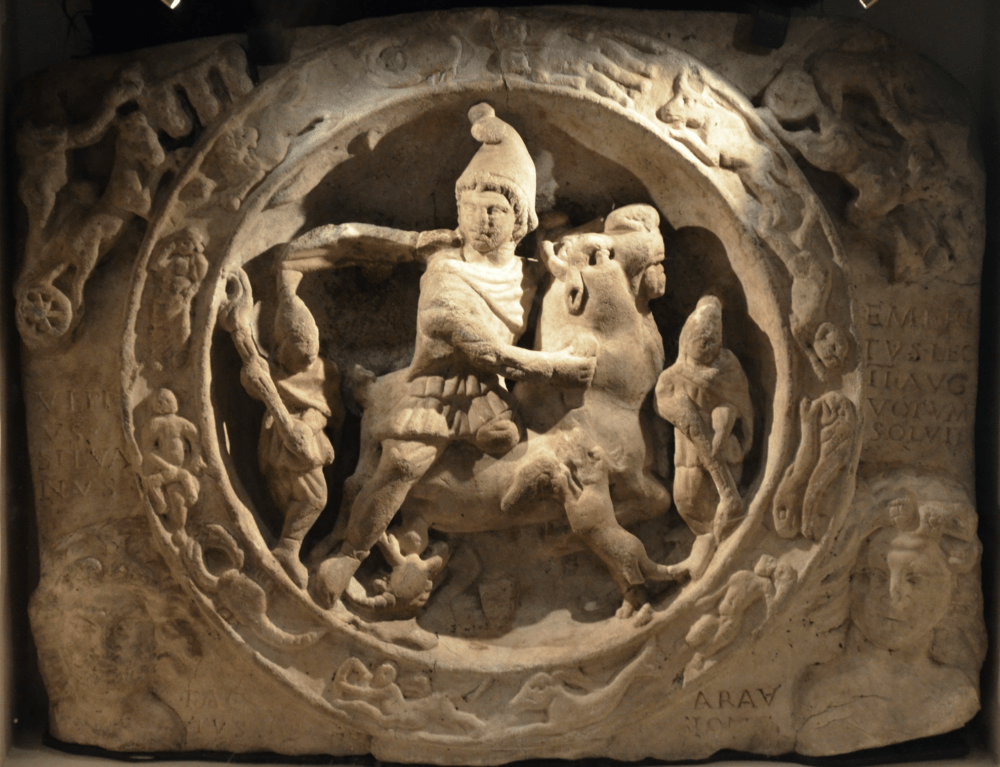
The biggest festival of the year was on Mithra’s birthday December 25th, and the 16th of every month was kept holy to Mithras. The first day of every week was dedicated to the sun, to whom prayers were recited at morning, noon, and evening.
Services were held on Sundays, in which temple bells were sounded and praises offered to Mithras. On special occasions the ‘soldiers of Mithras’ took part in the sacrament of bread and wine as sacred bulls were sacrificed.
3. Symbolism in Mithraism was Profound
Although Mithraism left a wealth of archeological evidence, its deep symbolic imagery is difficult to understand. The primary symbols include: Mithra killing a bull, a serpent, Mithra rising from a rock, Mithra’s body with ascending serpent, a caduceus-the magic staff of Hermes-Mercury, 12 signs of the Zodiac, Raven as messenger, a dog, Sun God (Apollo), Moon God (Diana) and others. What do these mean?
Seven Stars of the Big Dipper, Seven Planets
The primordial seven stars of the big dipper Ursa Major represent the link to Polaris, the North polar star. This is the pinnacle of the world tree connecting earth and the heavens. The seven planets preside over the cosmos, with the zodiac signs circling Mithra.
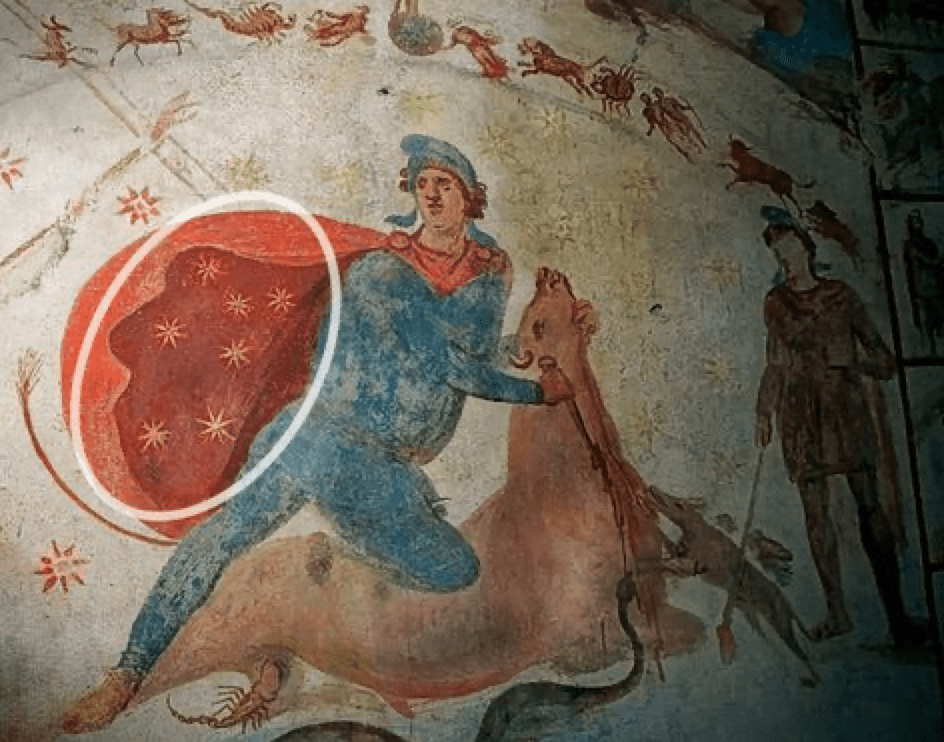
The seven stars on Mithras’ cloak represent the seven chakras, the seven planets, or the seven start of Ursa Major.
Serpent and the Kundalini
Mithra with ascending serpent symbolizes the ascending power of kundalini rising up the pillar of the body. The serpent represents both desire and time. For the kundalini to rise, time must be conquered, and the moment of achieving a higher consciousness, we attain a state where we are free of time.
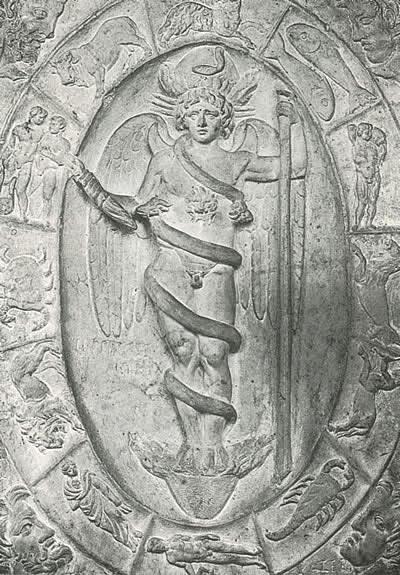
Ascension of the kundalini serpent power means to achieve divinity. Because the serpent sheds its skin every year it was considered a symbol of rebirth and regeneration. In Roman tradition snakes were seen to indicate the afterlife and wisdom. The staff of Hermes (two intertwined serpents) known as the Caduceus, symbol of healing and medicine, is traditionally carried by Mercury, the messenger of the gods.
Mithra Slays Taurus the Bull
The most famous artifact of the Mithraic temples age is the sculpture of a bull, in which the god Mithra slays the bull by stabbing it with his sword, while his other hand closes the bull’s nostrils. Mithra is looking up toward the Sun God. One foot is bent on the back of the bull and the other is holding down his hoof.
While there are too many symbolic messages here, and even more interpretations, I believe Mithras slaying the bull as the central motif in every Mithraeum composes a star map of certain constellations, along with the 12 zodiac signs. This has cosmological significance as Mithra is believed to have the ability to “shift the ages”, to move the world from the constellation of Taurus to Aries. Thus, killing of the bull symbolizes Mithra’s supreme power to move the entire universe into a new age, shifting the cosmic sphere in such a way that the spring equinox moves out of Taurus the Bull.
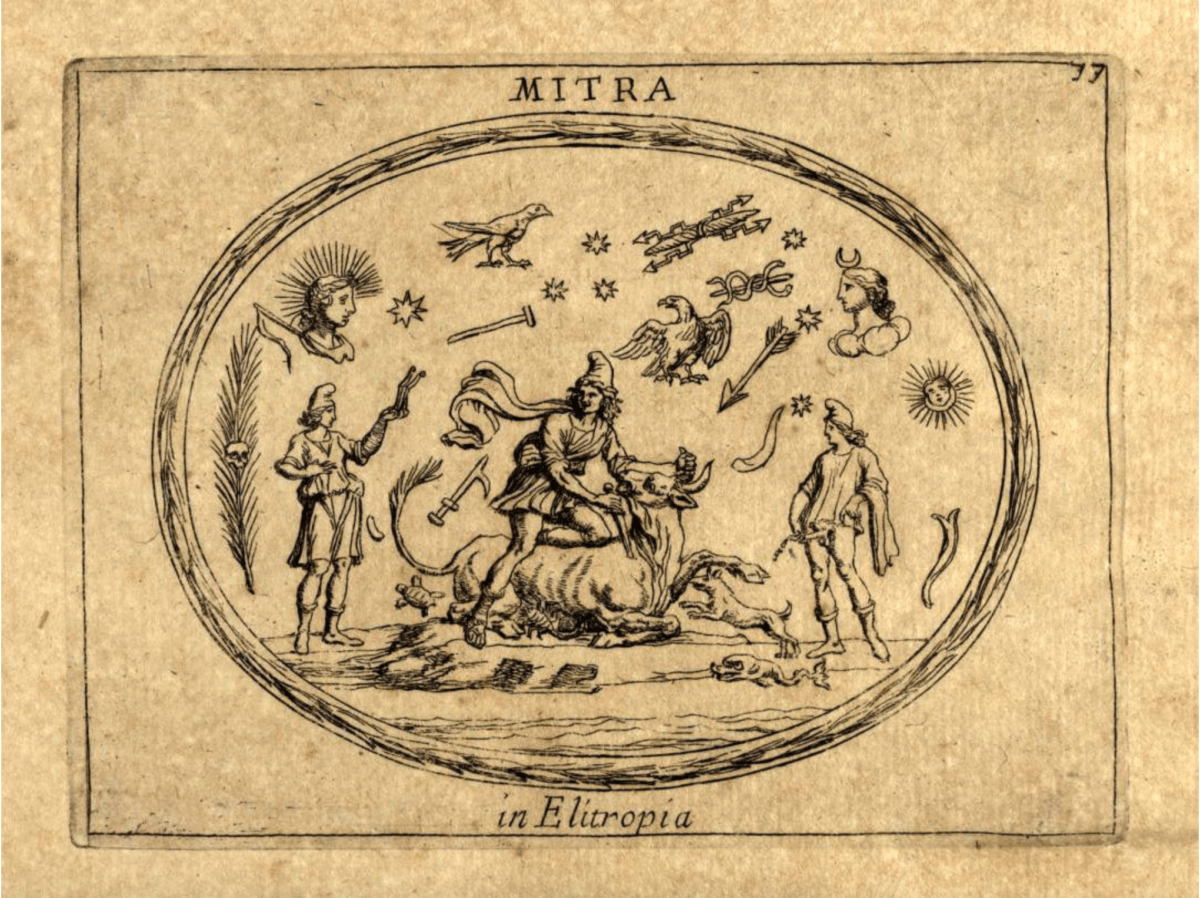
The re-discovery of the Precession of Equinoxes by the Greek astronomer Hipparchus in 2nd century BCE brought a new understanding of our place in the cosmos. (Although more ancient Egypt had this knowledge in the Dendera Calendar for thousands of years.) This is evidenced by the fact that a new zodiac sign is seen on the horizon every 2,000 years, hence, we enter a new age. The precession of equinoxes causes the sky at the spring equinox to show a specific constellation, moving slowly backward through the zodiac. (Newton believed it was caused by a “wobble”; others believe it indicates the Sun’s orbit through the Milky Way galaxy in “The Great Year” of 12 ages totaling 26,000 years.) It has been occurring in Pisces and will soon begin in Aquarius (i.e we are now moving into the Age of Aquarius – Yay!). This means that the spring equinox once occurred in the sign Taurus several thousand years ago. Hence Mithras’s killing the bull meant that he had the power to end the Age of Taurus and begin another age of mankind. To make matters even more interesting, there were other vastly different interpretations of Precession speed, hence the dates of the Ages. https://en.wikipedia.org/wiki/Astrological_age

Mithra Mandala shows the 12 Zodiac signs
Mithra means “Union”
Mithra means union. (mi to bind), and (tra to cause). Just like Religion = (Latin religare) union. Yoga = (Sanskrit yug) union. Hence, all three words mean the same thing, to find unity and to join with God as a Friend. Mithraism saw the Guru as a brother and friend, not as a master.
4. Emperor Constantine Solves a Political Problem Creating a New Deity
In 4th century Rome, Emperor Constantine faced uncountable challenges. He waged wars on all sides, had to deal with religious differences across the vast Empire, and suffered brutal disputes over his legal title to the throne. A brilliant and creative leader, Constantine supposedly dreamed that he would be victorious in battle when all his warriors held a cross on their shields. So, the story goes, they all painted the cross on their shields, swore allegiance to the Christian God, and went into battle. The enemy was taken aback, and Constantine’s army prevailed.
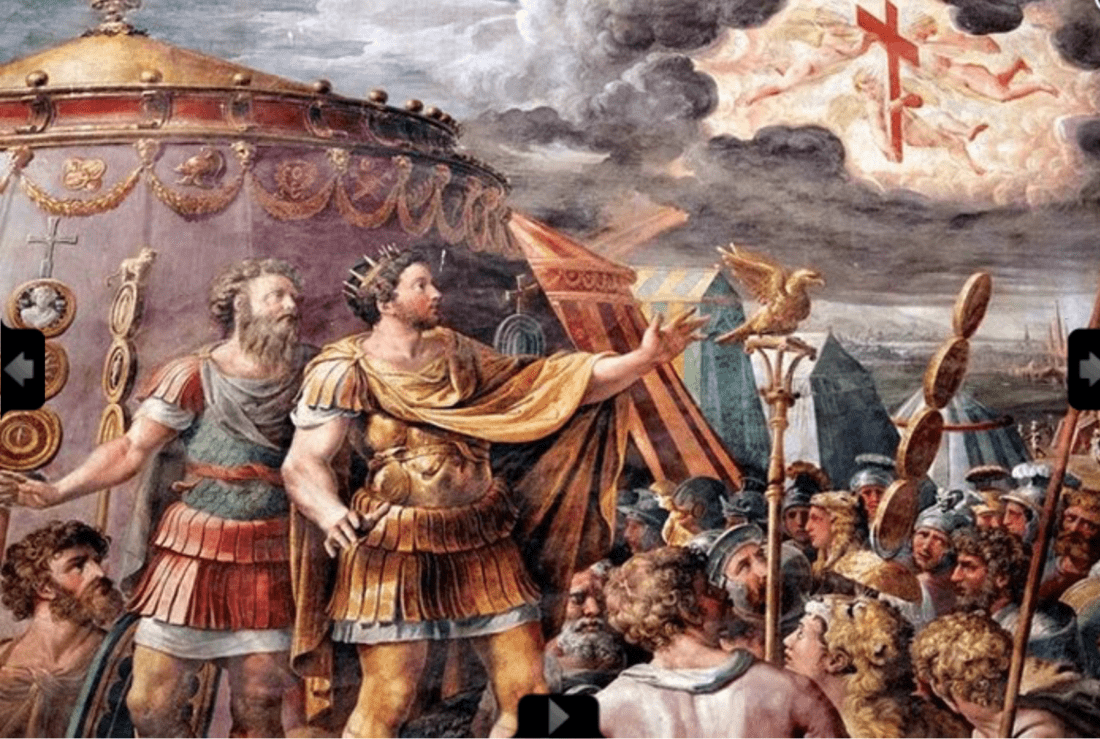
Although the Roman Empire’s religious policy was officially one of tolerance, it was often disregarded. Christians were frequently persecuted and called atheists because they believed in an invisible God. They were often beaten, crucified or beheaded. For example, the apostle St. Paul was beheaded in Rome in 67 CE. Later the apostle St. Peter was hoisted up on a cross and crucified upside down at the present-day Vatican. Jews were also held in check with antisemitism. Judaism was the religion of the Hebrews of Galilee and Palestine, based on Old Testament writings. The Romans took advantage of the story that Jesus Christ was killed by the Jews, thus blaming their own enemies for the martyrdom of Christ, further dividing the people against each other, planting undeserved seeds of antisemitism. Pagans in every area worshipped myriad local gods. And Mithraism was the religion of the secret societies of spiritual ascension in Roman Government.
Emperor Constantine could see that Christianity was a force to be reckoned with – the more persecution it endured, the stronger it became. Even worse, Christianity worshipped a single almighty God, which threatened his so-called divine right as Godly Emperor. Pre-existing Pagan beliefs were not a problem for Costantine, as they accepted the divine right of the Emperor by worshiping him as a God among other Gods. However Pagans were spread out, diverse, and impossible to control.
I’m guessing Mithraism was a problem for Constantine.
It was a lifetime feat of existential enlightenment for a man to attain all the Mithraic training levels and become a divine being. The problem was that people kept waking up. The military control system probably worked fine at lower levels, however an entire kingdom of Mithra-trained god-like beings would be uncontrollable. The secret society aspect worked well in a religious hierarchy, but not for the general public, who should be kept in the dark. And women were not well included. So Mithraism had to be eliminated. Or morphed into something more docile.

On his deathbed, Constantine finally took Christian baptism, believing this would release him of sins he committed while emperor, and ensuring succession to his divine dynasty, leaving the empire to his sons and the Constantini clan.
Who was Yeshua?
Yeshua, his Mother Mary and John the Baptist were all said to have been Essenes ascetics and graduates of the ancient Hermetic School in Egypt. The Hermetic teachings illuminate the mystical secrets of ascension and the power of wisdom through purification and discipline of the desires and senses. During his so-called “missing years” Yeshua was said to have visited monasteries in the Himalayas.

Yeshua did not call himself the Christós, or Messiah. In 50 CE, Saint Paul and other followers began to refer to Jesus as the Christós. Χριστός in Greek is a translation from Hebrew ‘Messiah’ meaning ‘anointed with sacred oil’. They believed that Jesus was the Messiah prophesied in the Old Testament. Other rebel leaders protected the Jewish homeland were often called Messiahs or Christós. Five other influential Messiahs appeared from 4 BC to 70 CE: Judas of Galilee; Simon – a rebel slave in Perea; Athronges – a Judean shepherd; Menahem – grandson of Judas and Simon bar Giora.
Building a New Deity
By creating a New Myth, Constantine resolved all his political-social dilemmas. Christianity was monotheistic, but it could be a perfect fit. There were no new elements in it. Similarities with ancient traditions made it acceptable to all – Christians, Pagans, Jews, and Mithraists. Even the traditional festival ‘Sol Invictus’ or ‘Unconquered Sun’ remained unchanged, marking the birth of the Sun God or Mithra on December 25th, the return of the Sun on the solstice day.
5. Constantine Dissolved Mithraism, Created a New Religion, and made himself the Head.
As a political strategy, Emperor Constantine sought to unite his empire by merging the Christian faction of his empire with local Pagan worship and Mithraic secret societies. Pagans could keep their traditional celebration dates while the Christians got to keep their names and idols. So, Paganism and Mithraism got dressed up in Christian clothing. It was a compromise by all parties that allowed Constantine to expand his empire and secure his throne, with him as the undisputed sacred dynastic ruler.
To be clear, there were myriad types of Paganism, which simply means a “countrified religion”. Besides Christ, Mary, and Mithras, there were deities aplenty: Apollo, Diana, Osiris, Tammuz, Adonis, Balder, Attis, and Dionysus, the Divine Mother Cybele, Hercules, and Perseus. Virtually every pagan religion was suppressed to incorporate the spread of Christianity across Europe and the world.
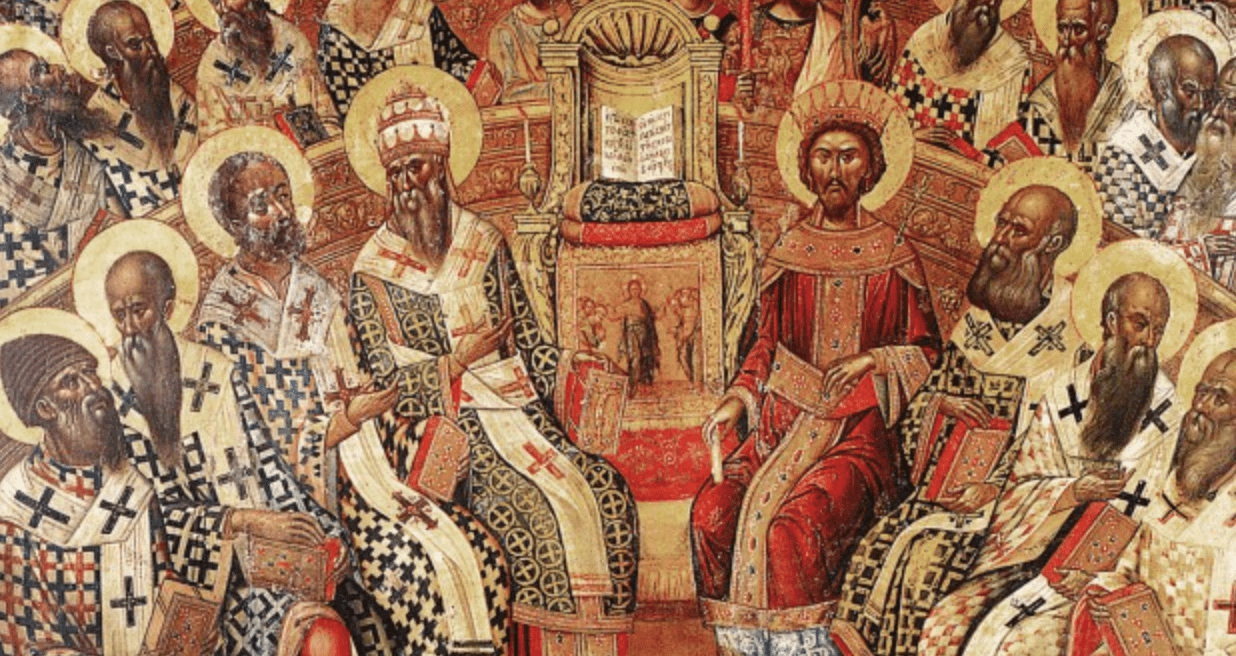
In 325 AD, Constantine convened the Council of Nicaea which was designed to unify the doctrines of this new state religion of “Pagan, Sun God-Christianity. Thus, began a great change and codification of the Bible. Christianity joined the Roman Empire in its customs and practices in the worship of the God. Many issues were decided at this council such as the doctrine of the Trinity, the calendar, the Sabbath day, Christmas, and Easter. But the end result was to eliminate most of the mystical teachings, effectively gutting the ascension capacity and watering down the Christian faith. That is unfortunate. Some wonderful Christian mystical writings are found in the Dead Sea Scrolls, Gnostic Bible, and Book of Enoch, which were left out of the Bible (perhaps because they were discovered much later).
Christianity represents a morphing of the Western World into Monotheism.
Constantine was smart. He incorporated ritual elements of many other ancient sacred traditions into a persuasive new faith. As the Roman Empire grew weaker, the new Christian church rose in power. They called the new religion Catholic from the Greek katholikos, meaning universal and true to the central Roman church.
Constantine Created a Legacy that Endured 2000 years.
And the rest is history. The Emperor constructed the first Christian basilica in 326 CE on the present-day Vatican site. Yep. Turns out the current Vatican City is built over three other ancient temples: to Cybele – the original Roman Great Mother Goddess, Apollo, and Mithra the Sun God.
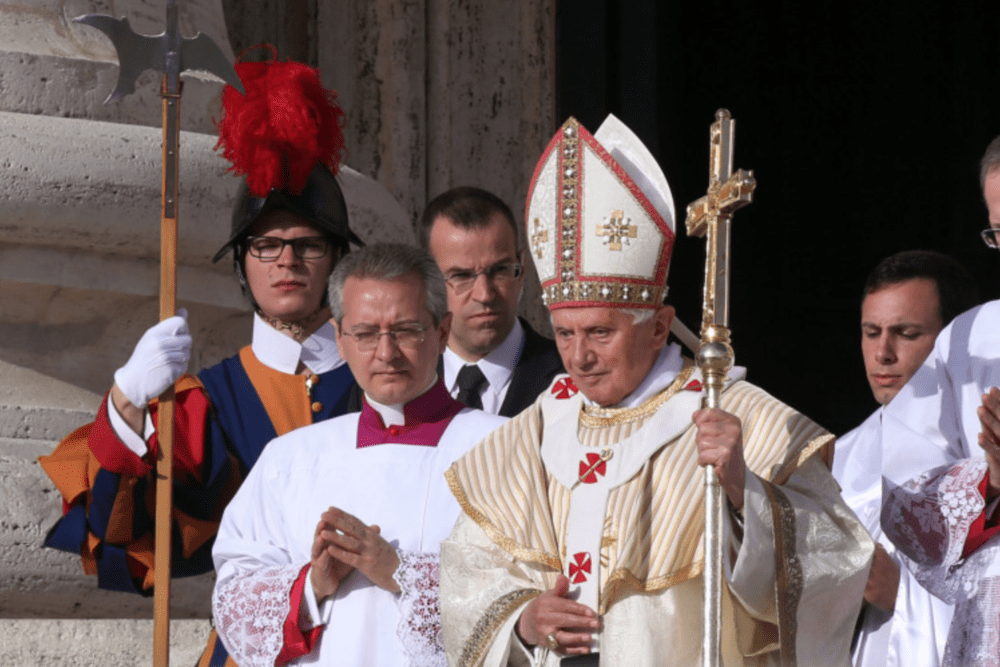
Constantine’s mother Helena became a Christian in 312 CE at the age of 63. He asked her to supervise a journey to Jerusalem to find Christian relics to sanctify the new basilica. Helena went to the holy land and returned with pieces of the crucifixion cross, nails, a holy tunic, and rope fragments. On her death she was sanctified as Saint Helena.
In 392 CE Emperor Theodosius declared Christianity the official and sole religion of the Roman Empire. Pagan temples were converted or destroyed. Mithraism, Sun worship and all other religions were prohibited on penalty of confiscation of property, torture, slavery, or death. The ancient library of Alexandria, Egypt was destroyed and heretic book burned. Temples to the Pagan gods became Catholic churches. Rebirth and reincarnation were removed from the teachings. Astrology was removed from the schools and ridiculed as heretical. Cosmic knowledge was reserved for secret societies and the Emperor.
Roman rulers adopted Christianity as the state religion, while continuing to create its doctrines and practices. The Roman Empire became the Holy Roman Church. The Catholic Church had no competitors for 1600 years until the protestant reformation. If you opposed the church, you were a heretic. Women were permitted to worship and to be nuns in a subservient position. This was deserved and righteous denigration due to Eve’s error in the Garden of Eden and the Fall of Man. Original Sin was loosely interpreted from the Hebrew texts, as Eve’s transgression. As a result, the church declared all of mankind was born in a state of shame, which could only be cleared by state baptism and strict adherence to the tenants of the new church.
6. Romans Created a New Calendar to Count Years from 1 CE. This was done in order to Stop the Rapture and Postpone the End of the World!
I couldn’t resist sharing this little tidbit with you! It turns out that there was a good reason to begin counting years from the birth of Jesus Christ. Dionysius Exiguus, a 6th century monk, was heavily influenced by the Great Year Cycle of 26,000 years, Precession of the Equinoxes and astrological ages. Dionysius wanted to begin counting from Christ’s birth, because people had been told the great Resurrection (Rapture?) and the End of the World would occur 500 years after the birth of Jesus. Yup.
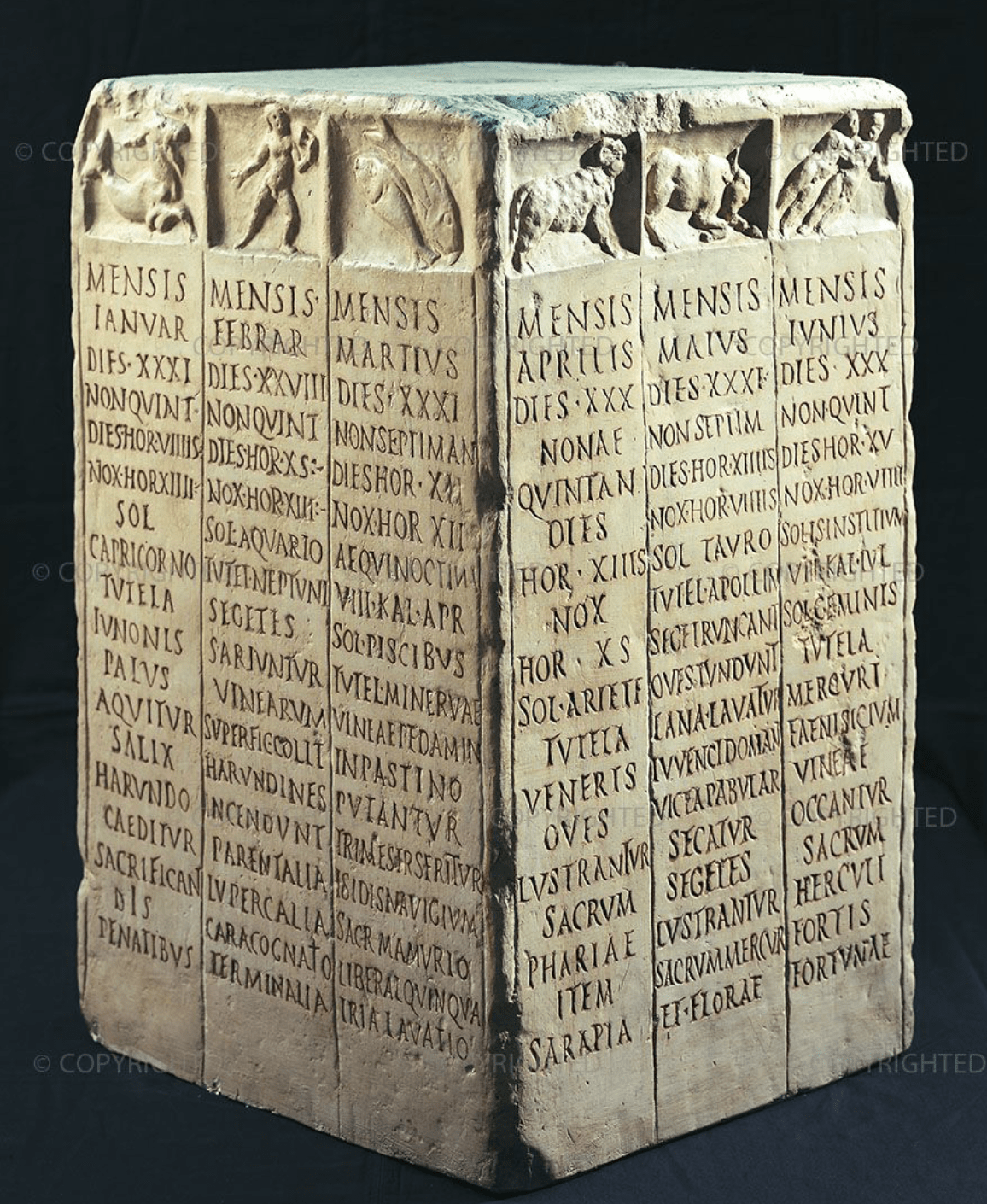
A Roman Calendar from January through June
At that time, the world calendar began from Creation in the Old Testament, in which it was believed that Jesus was born in the year 5500 BCE, and that in the year 6000 they would see the Second Coming of Christ and the end of the world. Oh dear! Since this date had already passed, Dionysius, looked for a NEW end of the world in the future. Heavily influenced by cosmology, the Great Year, and planetary conjunctions, the doctrine says that when all the planets are in conjunction that this cosmic event would mark the end of the world. Dionysius calculated that this conjunction would occur in May CE 2000. He then applied another astronomical timing based on Precession of the Equinoxes. (Although incorrect, since some astronomers at the time believed the Precession cycle was 24,000 years where it is probably closer to 25,920 years), he calculated twelve astrological ages of 2,000 years each.
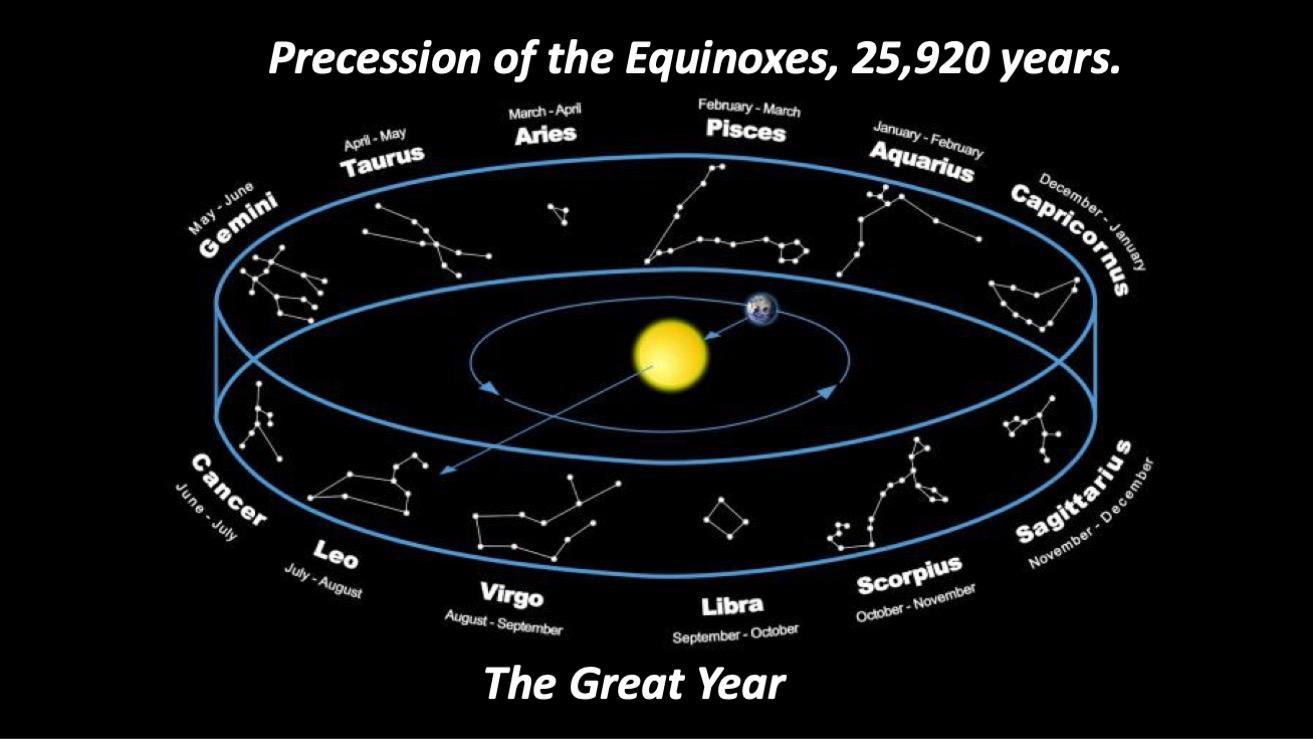
Dionysius reasoned if the planetary alignment marked the end of an age, then the birth of Jesus Christ marked the beginning of the Age of Pisces. He therefore deducted 2,000 years from the May 2000 CE conjunction to produce AD year 1 for the new date of Christ’s birth That’s what I’m told. Hmmm… Something might be going on here. What does this mean for us now? I’m not sure. Can you please explain this to me? (Like I’m a child).
7. The Roman Empire never fell. It was transformed into the Roman Catholic Church. The Vatican became fabulously wealthy, guiding our lives, our money, and our reality for two thousand years.
In the 4th and 5th centuries Rome was brutally sacked and defeated by warriors from the north. The Roman Empire declined slowly. At the same time, and the newly inspired church rose into power. Roman bishops adopted Mithraic high priestly titles, secret rituals, titles, robes, and elegant hats. The highest initiation level of Pater Patrum, soon became the Papa, or Pope. The similarities are many.

As Rome declined in political power, Roman Catholic rulers rose in power. Beginning in 491 CE, all emperors were required to sign a declaration of Catholic faith and allegiance before their coronation. Perhaps the Roman Empire did not fall – it simply morphed into the Roman Catholic Church and took up residence in the Vatican, built over the underground Mithraic ritual temple.
During recent centuries, the Christian faithful continue to uncover more actual relics, ancient scriptures, vast wealth, and stories of Jesus. Soon the wealth of the Roman Catholic Church was incalculable. Bishops and Popes advised royalty to the world, including the Kings and Queens of England, Spain, and the Doge of Venice. A linchpin in the global network of power, the church manages uncountable wealth. Between the church’s priceless art, land, gold, donations, indulgences, bequeathed valuables, and investments across the globe, the church became one of the wealthiest institutions on Earth. Church leaders translated the Bible from Hebrew to every language of the world. And it has interpreted the word of God for the masses according to its best interests. That is power.
Question: When does a thought form become real? Answer: Every day. Anytime. If we believe it, then it becomes real. That’s the power of the human collective mind. A thought form as powerful as a God, Mary, Jesus, becomes real. It can be a force for good or evil. When many people share a thought form, that makes it a reality.
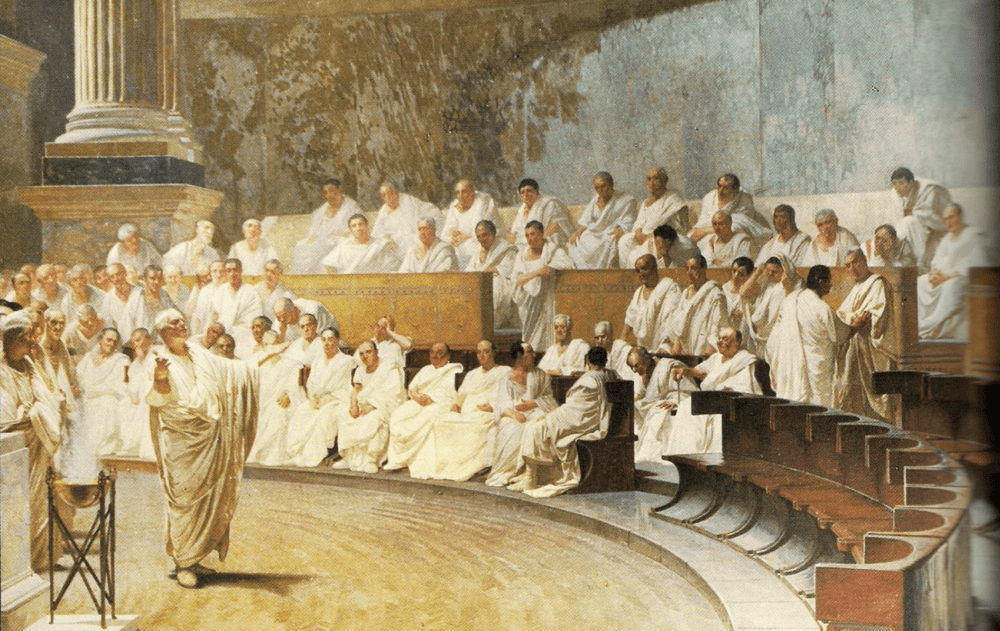
As the Roman Empire fell, it became a planetary church infusing every part of our lives in the Western world, and to the colonies. While the Bible is a sacred document, and it is real, the scriptures have also been carefully edited for purposes of consistency and control. There have been some translation errors and many original scriptures were omitted. Christianity was created essentially as an entirely new religion, all the elements neatly assembled from existing folk traditions and other religions.
8. Hint: The Moral of the Story is to know God within yourself.
Now is not the time to reject the church or to denounce anyone. The story of Mithra is just one more confirmation that we’re in the Shift of the Ages. We’re on the right track!
“Mitha taught the only truth, the secret to life: It’s time to buckle up, take responsibility, claim our own divinity, and know God within ourselves without depending on outside authority to do it for us.”
Sri Jana

Thanks for showing up! A big hello from me and Lama D in Bali.
Suggested Reading:
- A Study of Mithraism, by Martin Luther King 1949 (an amazing research paper from his 2nd year at Crozer Theological Seminary) https://kinginstitute.stanford.edu/king-papers/documents/study-mithraism
- The Roman Cult of Mithras, Giovanna Palombo https://history.sfsu.edu/sites/default/files/2006_Giovanna%20Palombo.pdf
- Mithra’s Espteric Astrology, http://www.shamogoloparvaneh.com/PDF_Mithras_Esoteric_Astrology_V3.pdf
- Mithraic Symbols Decoded http://pictish-mithraism.com/page54.php
- Who Was Mithra? Sanctuary for a Mysterious Cult that Once Rivaled Christianity is Found on Corsica, https://www.ancient-origins.net/news-history-archaeology/who-was-mithra-sanctuary-mysterious-cult-once-rivaled-christianity-found-021244
- Cumont, Franz. The Mysteries of Mithra. Chicago: Open Court, 1903. New York: Dover, 1956.
- Ulansey, David. The Origins of the Mithraic Mysteries: Cosmology and Salvation in the Ancient World. New York: Oxford, 1989.
- Mithraism and Astrology, https://encyclopedia2.thefreedictionary.com/Mithraism+and+Astrology
- MITHRA & MITHRAISM, The Seven Grades of Initiation, https://www.cais-soas.com/CAIS/Religions/iranian/Mithraism/m_m/pt8.htm
- Astrological-Age, https://en.wikipedia.org/wiki/Astrological_age
- https://cais-soas.com/CAIS/Religions/iranian/Mithraism/mithraism_and_christianity.htm


